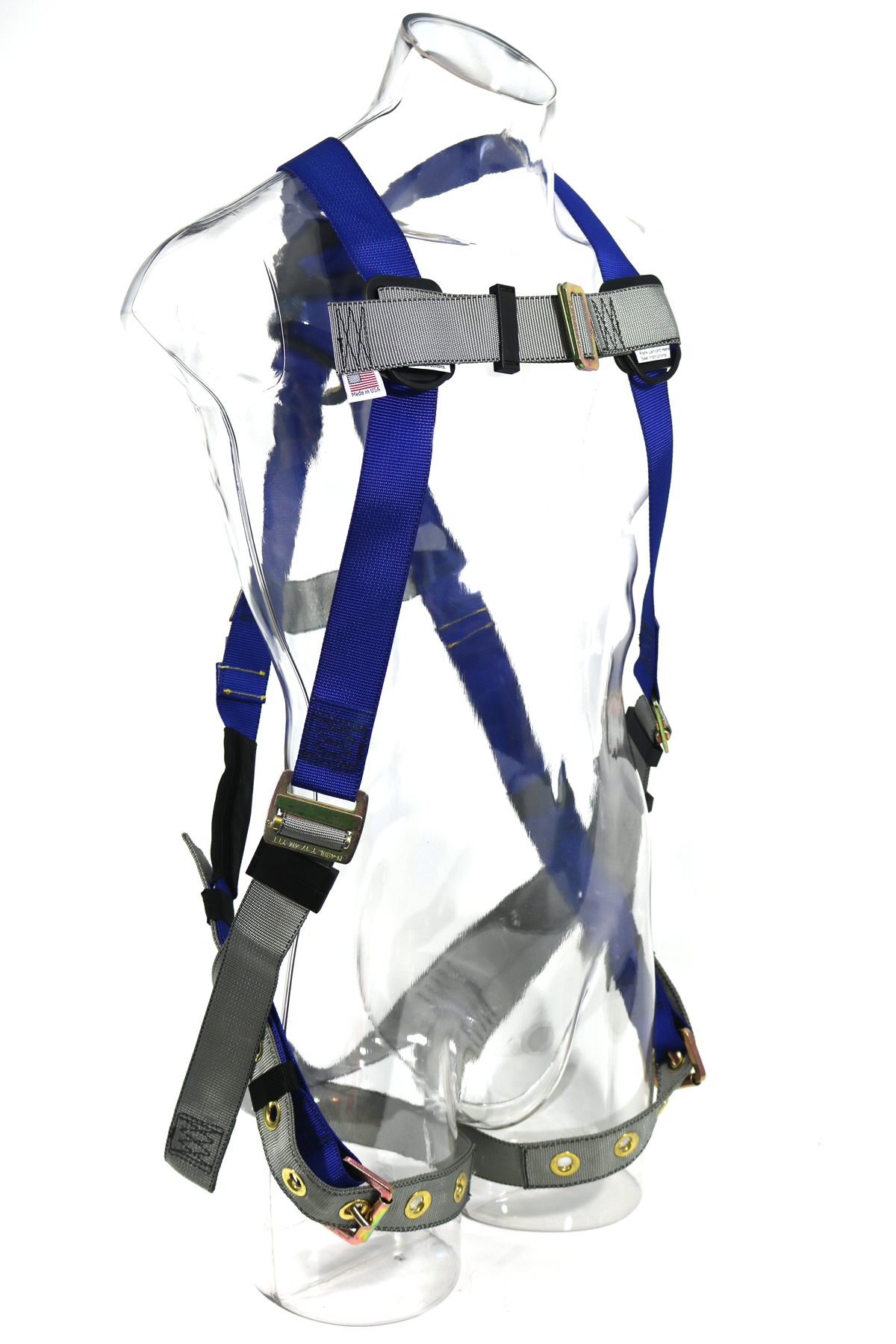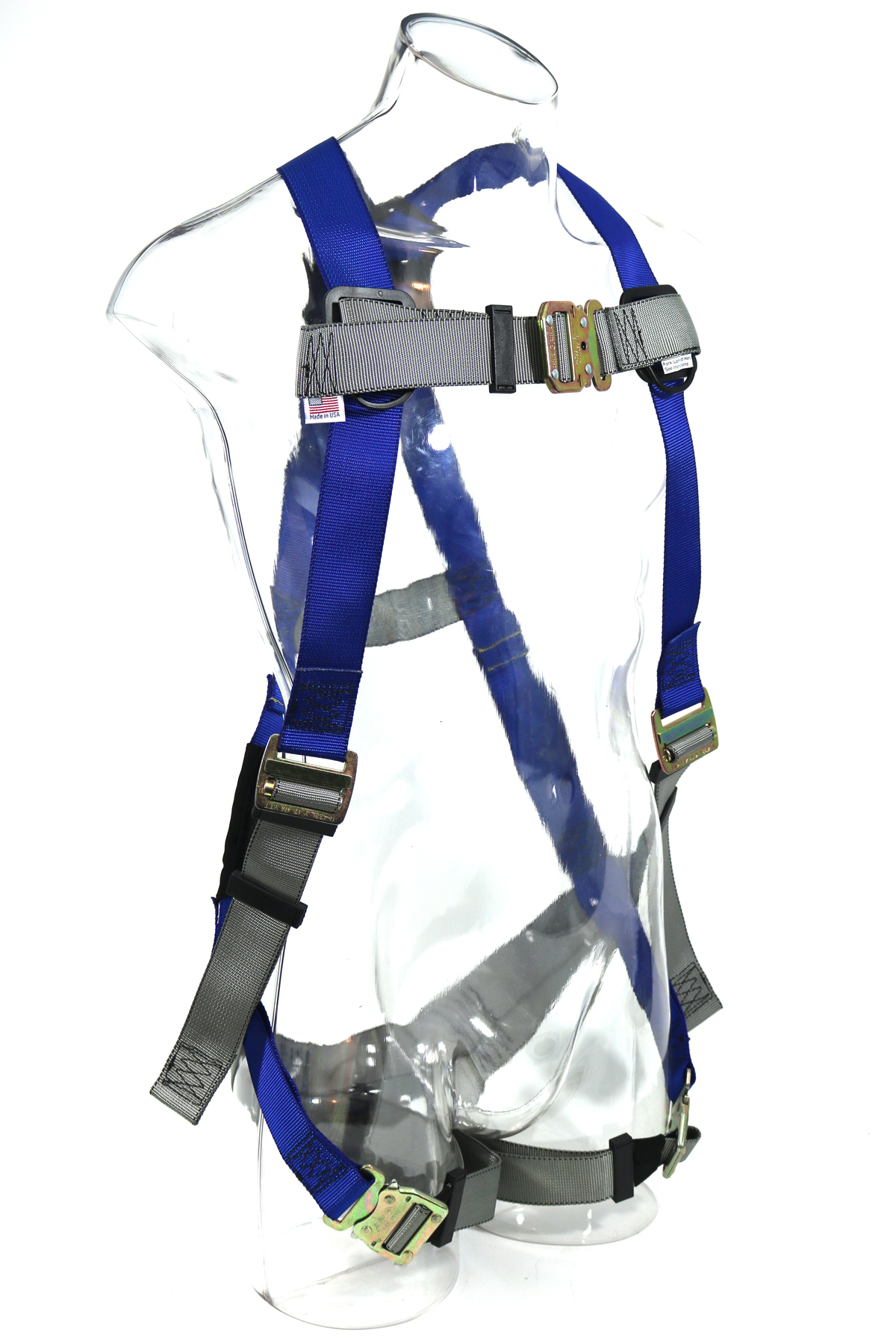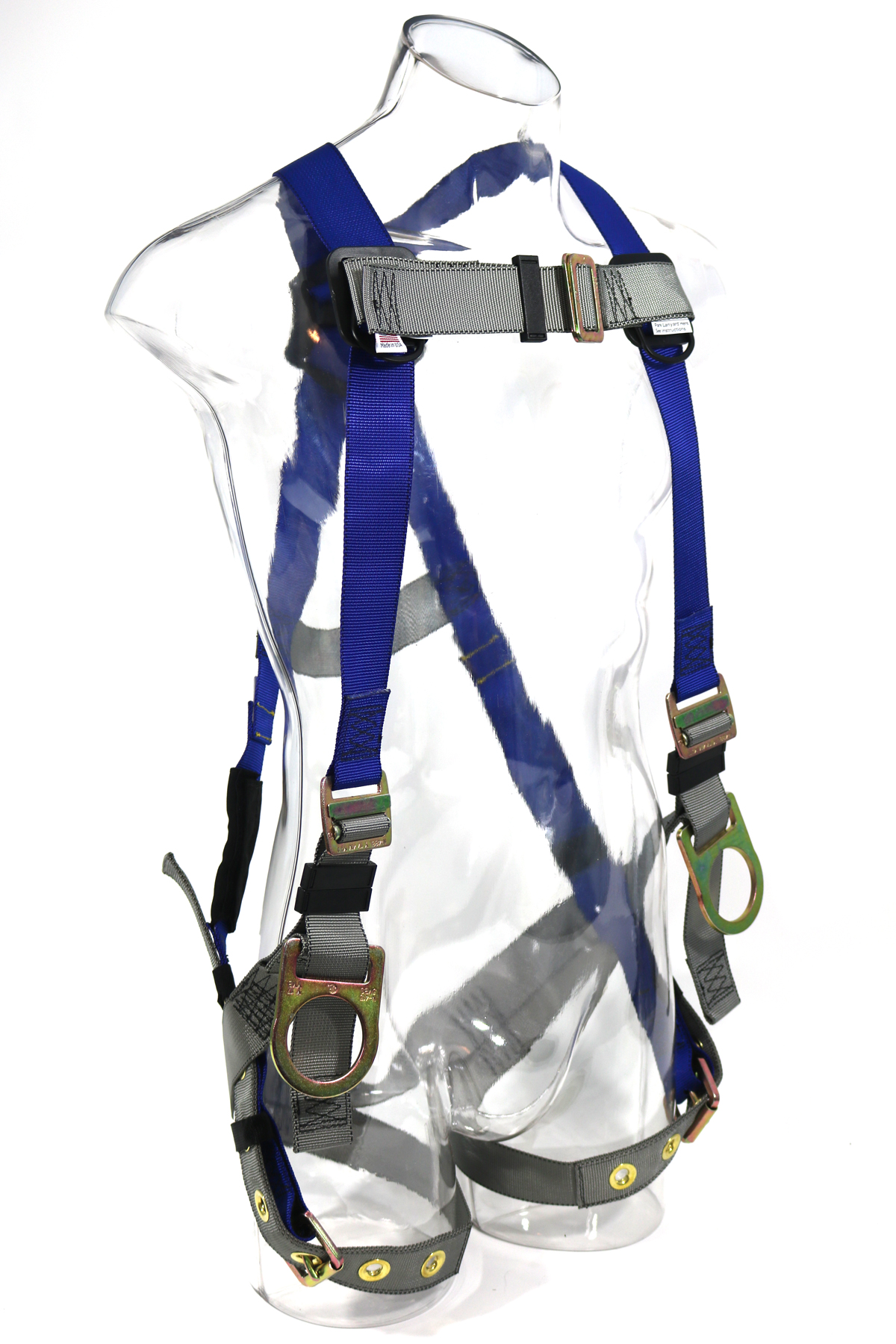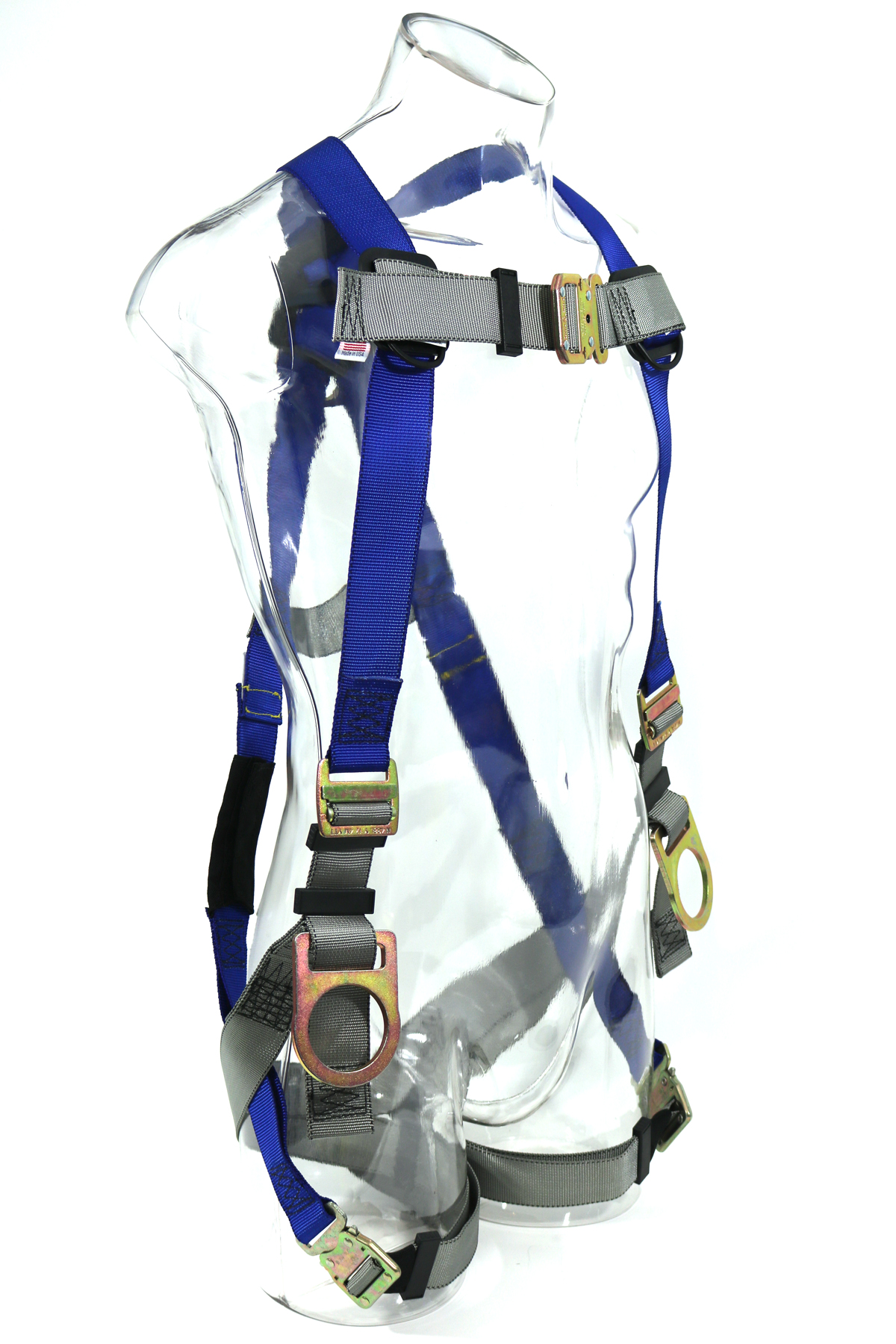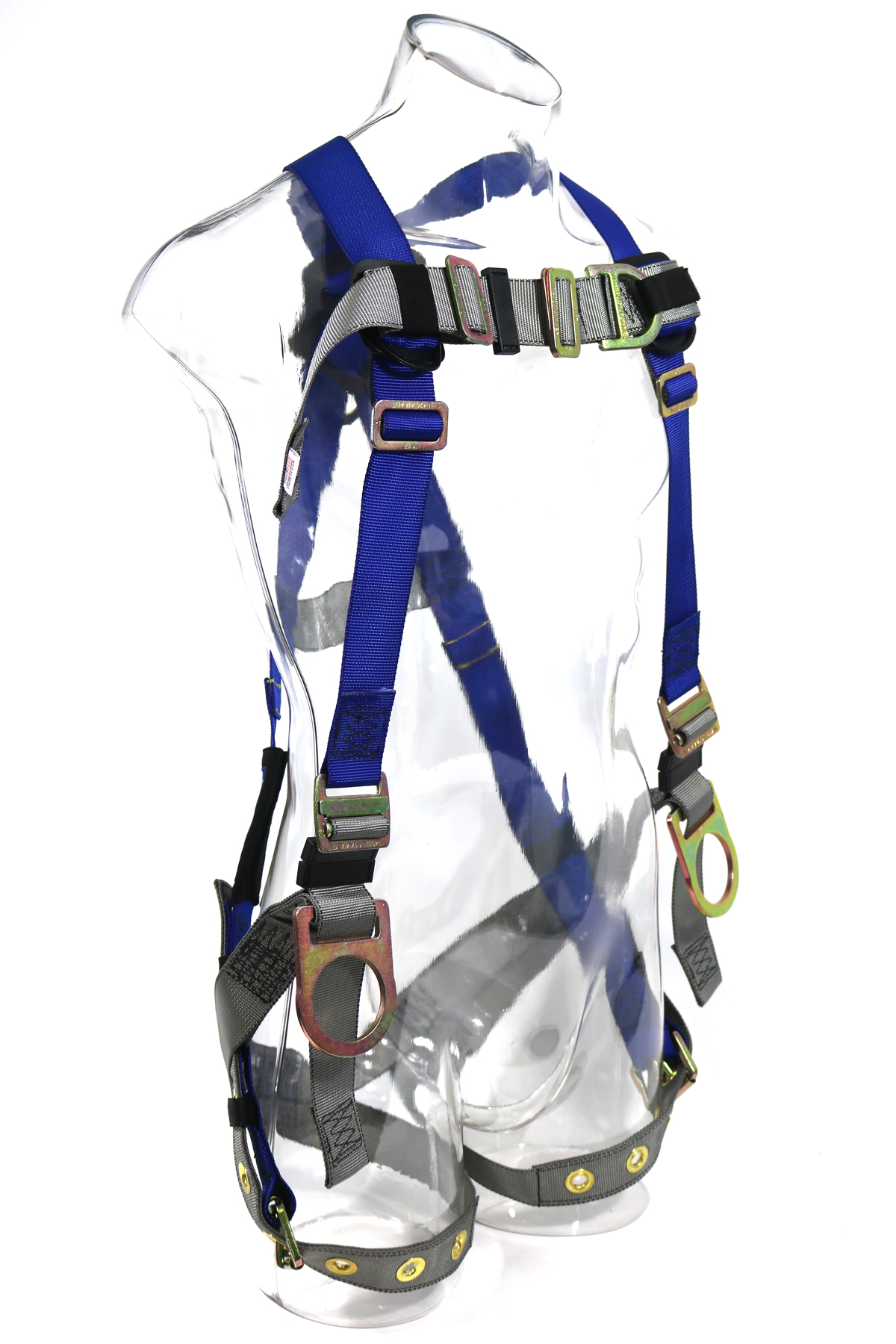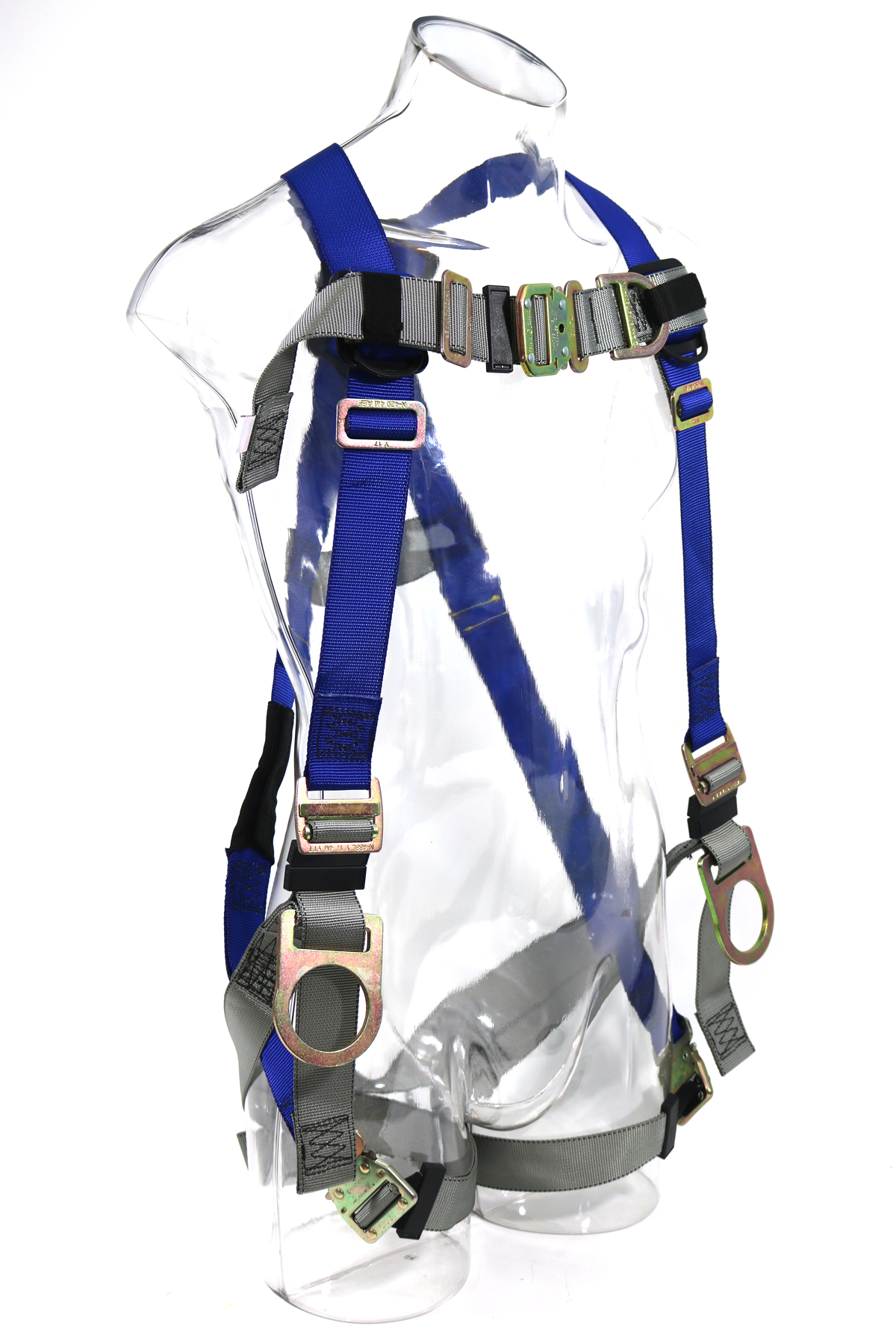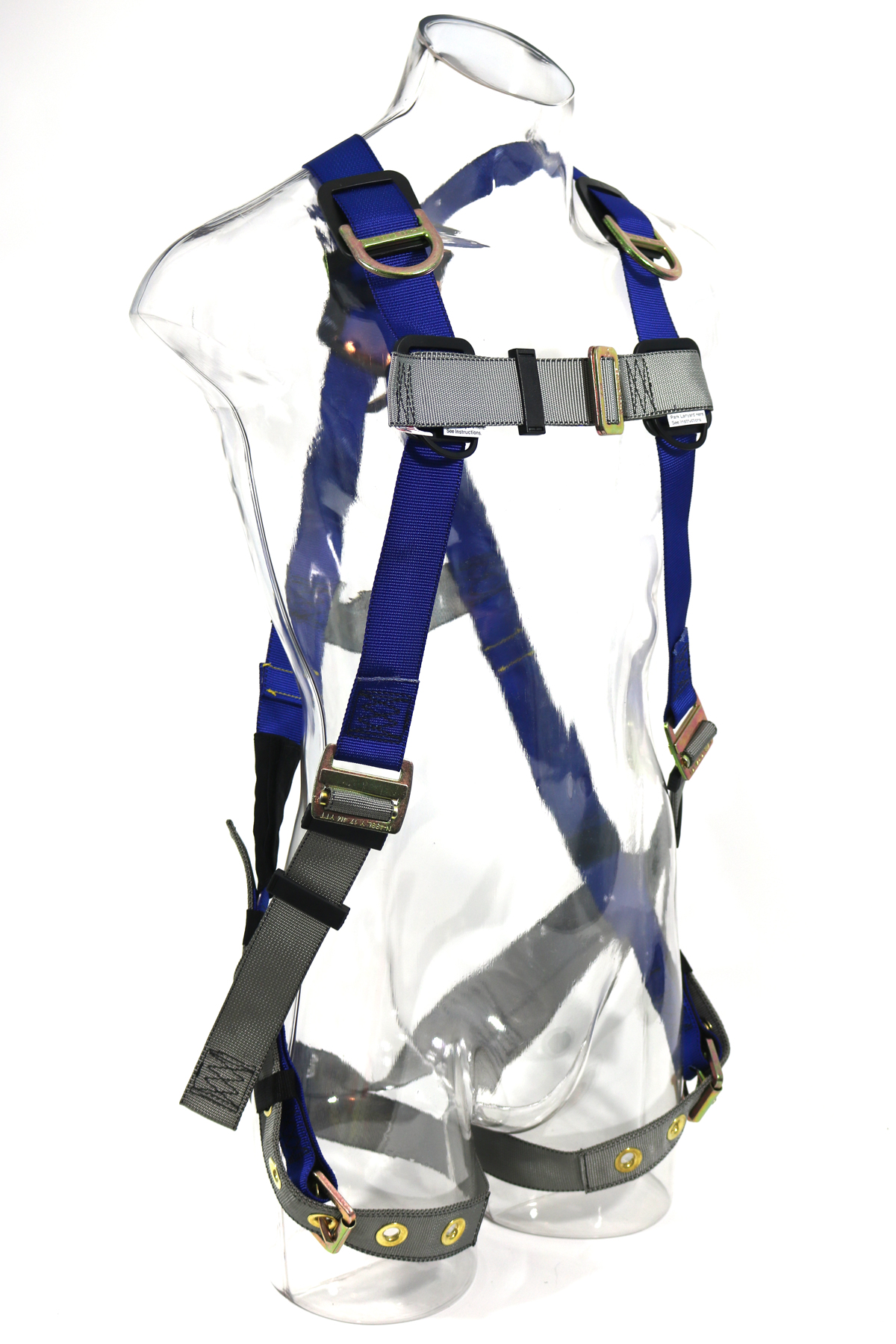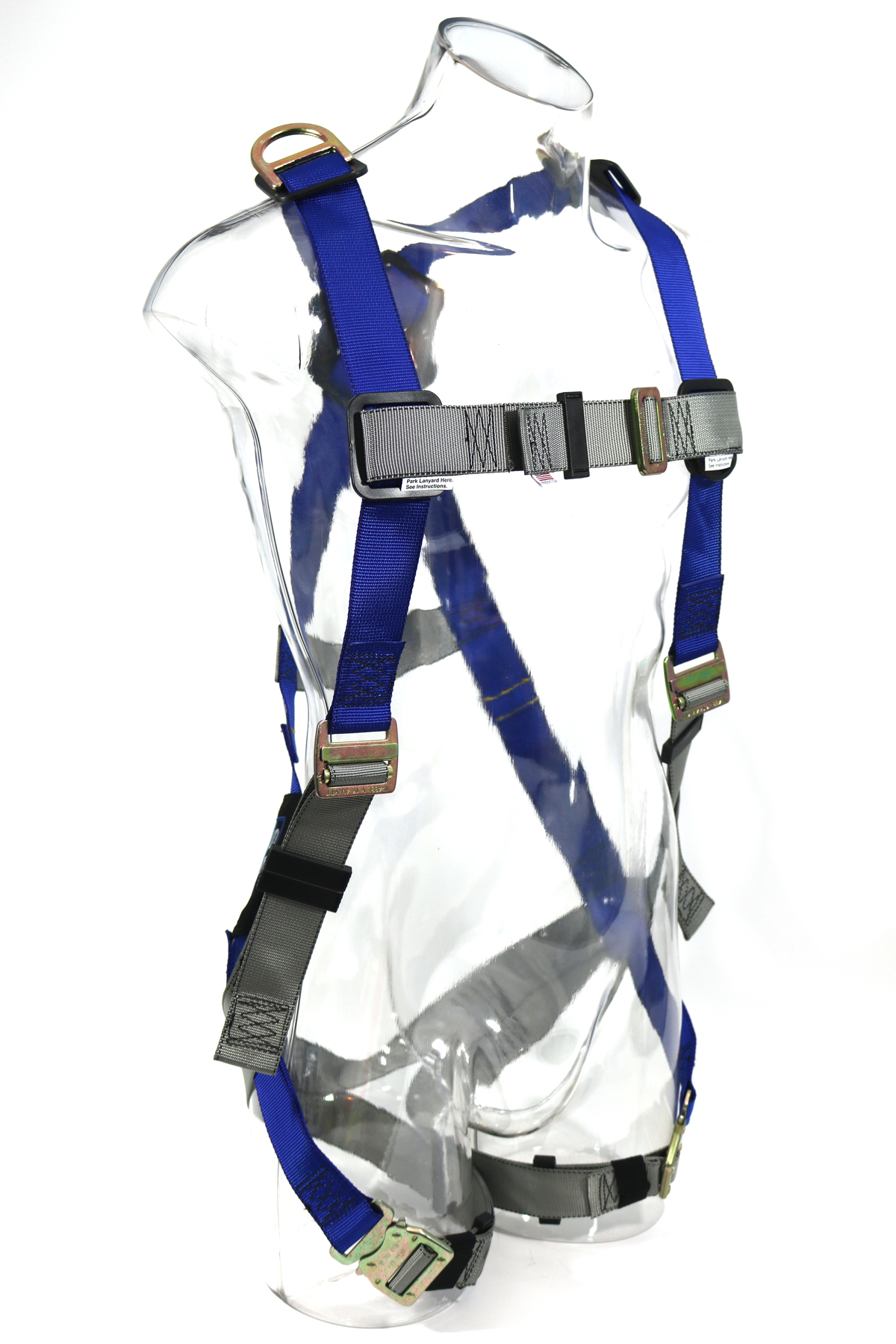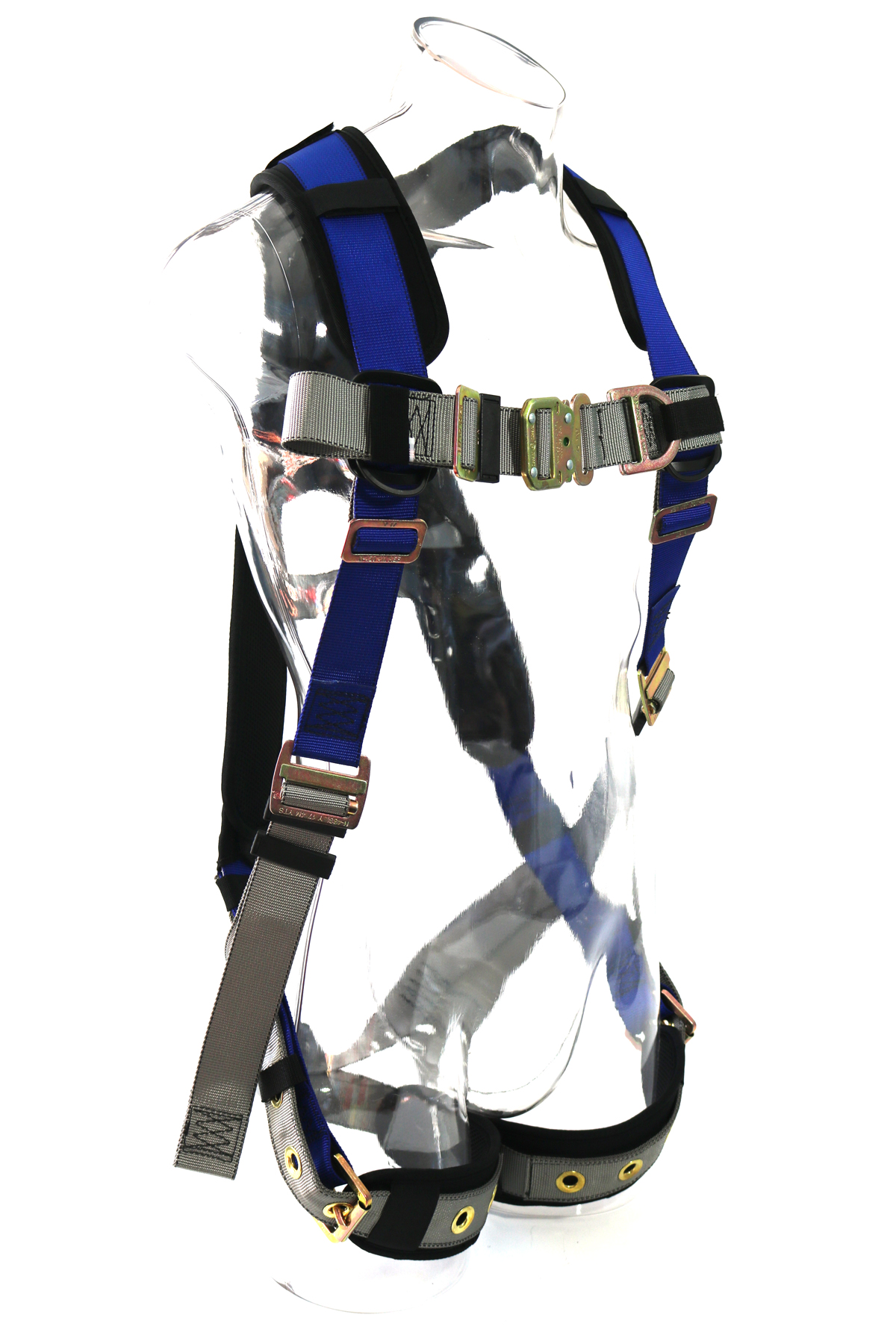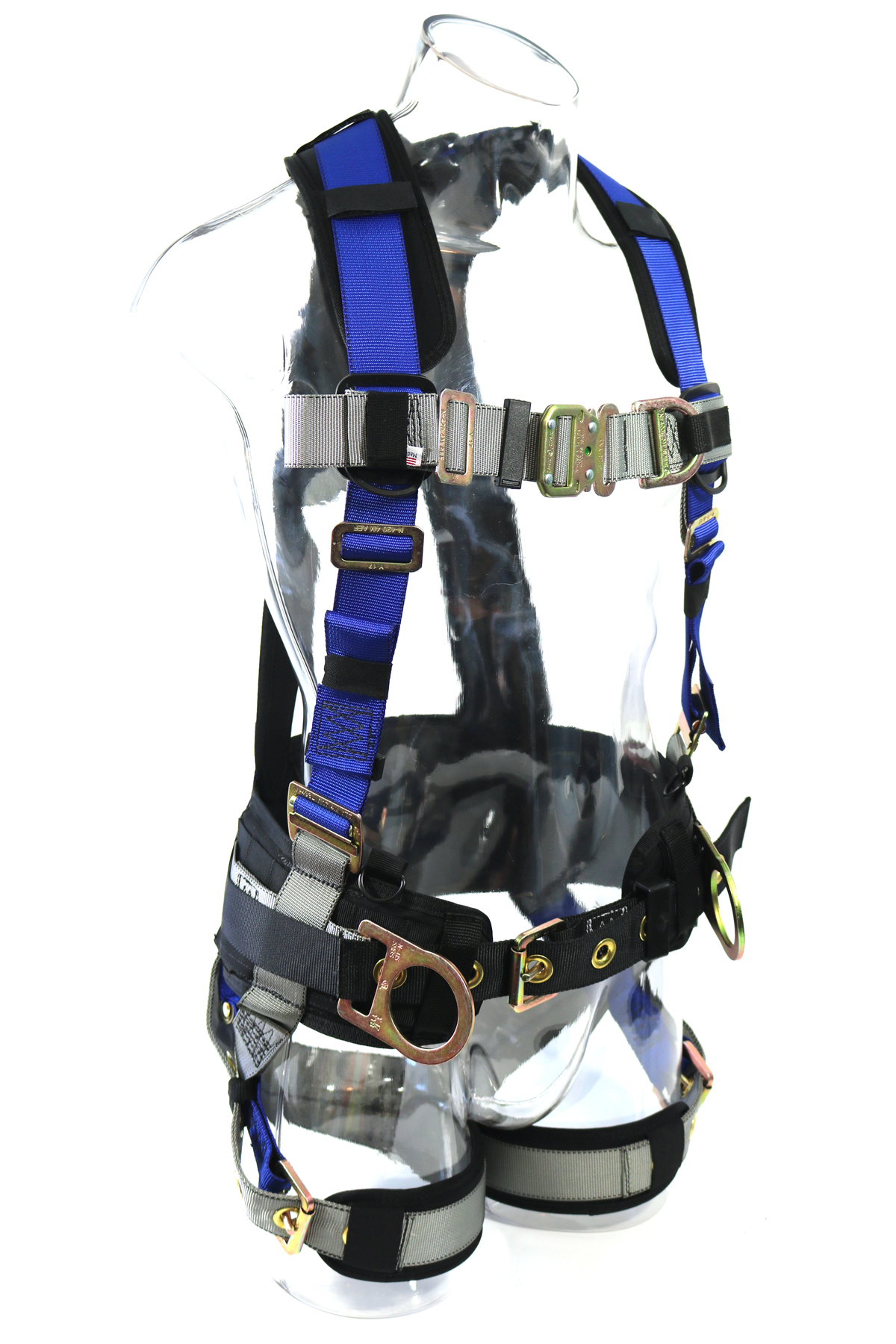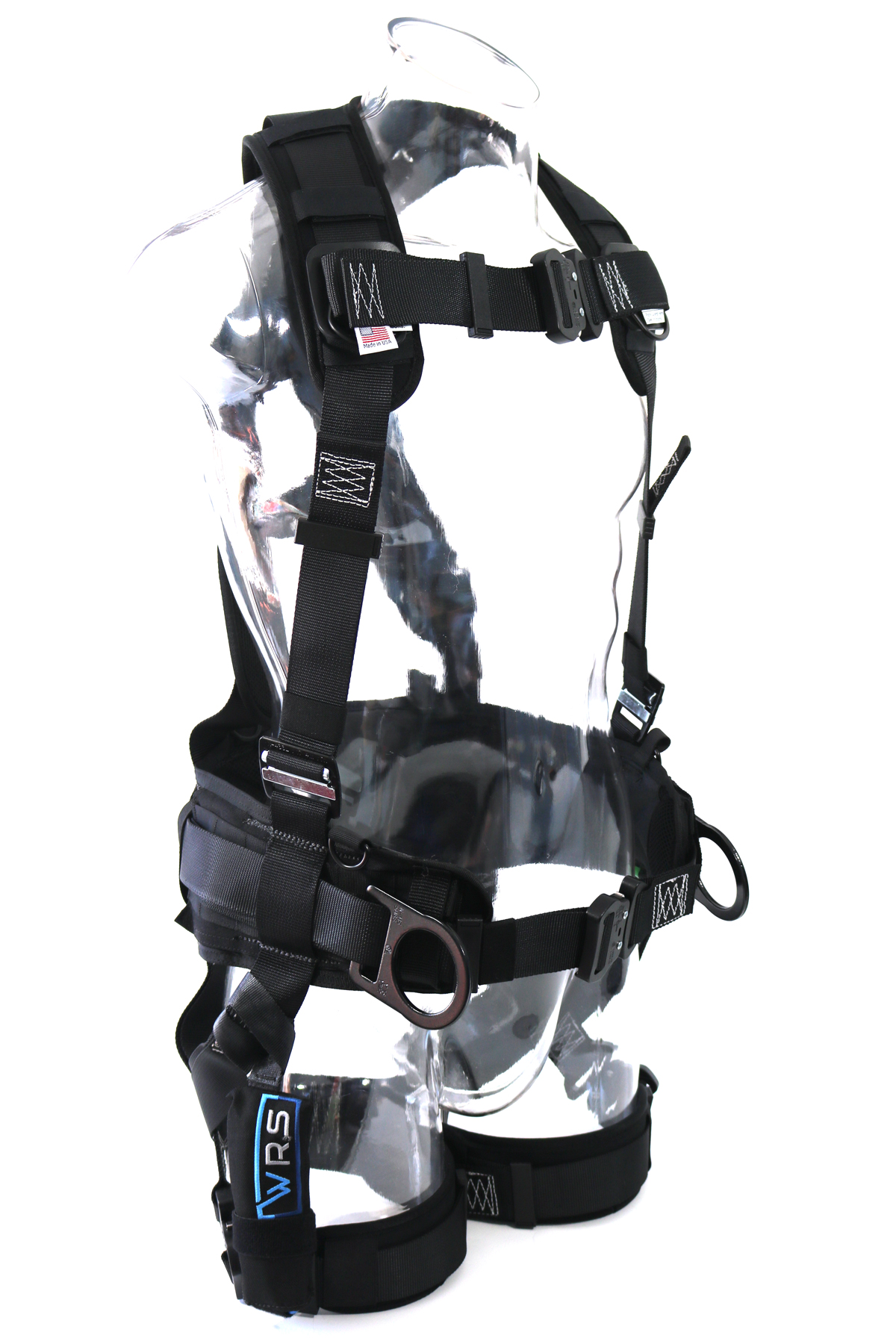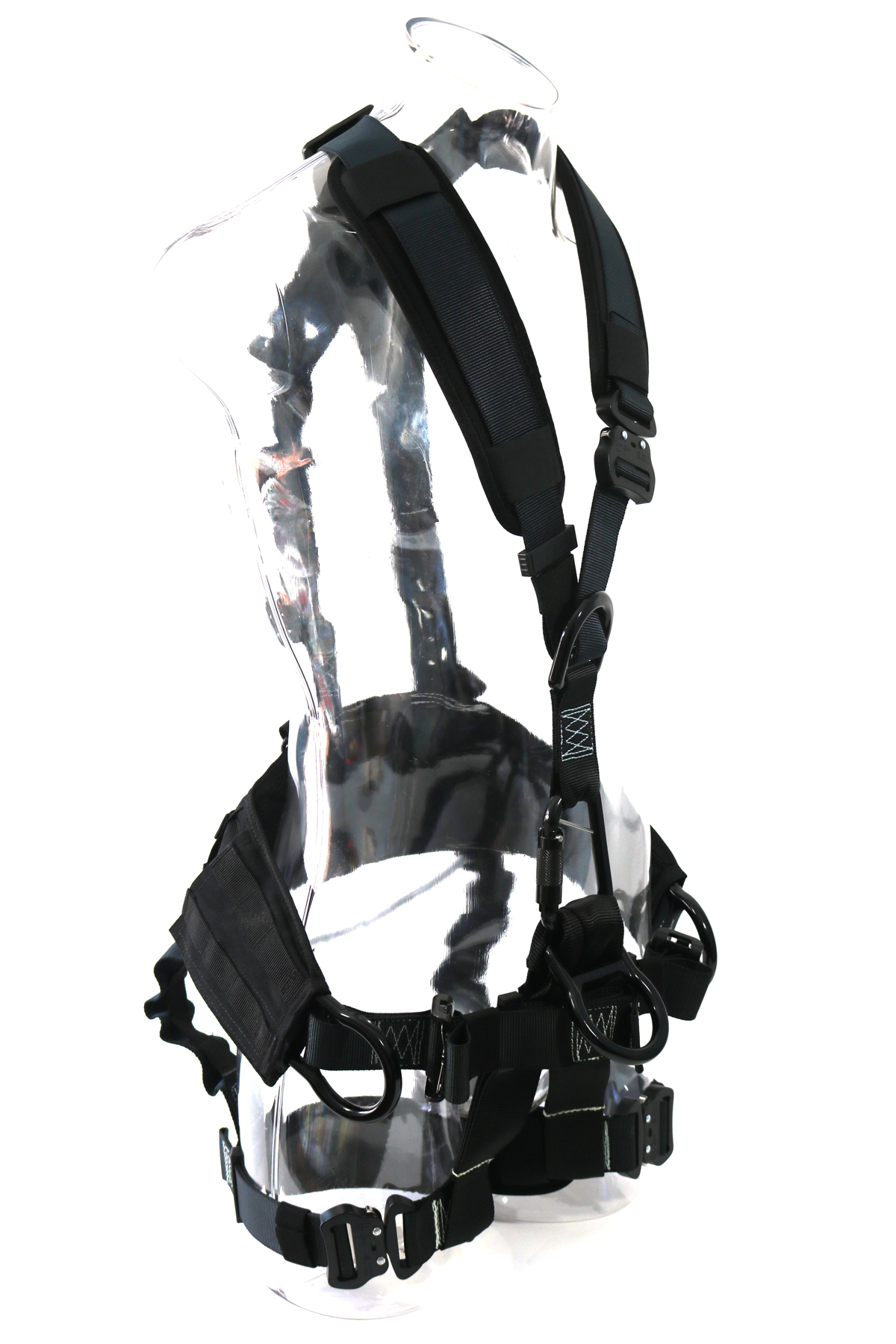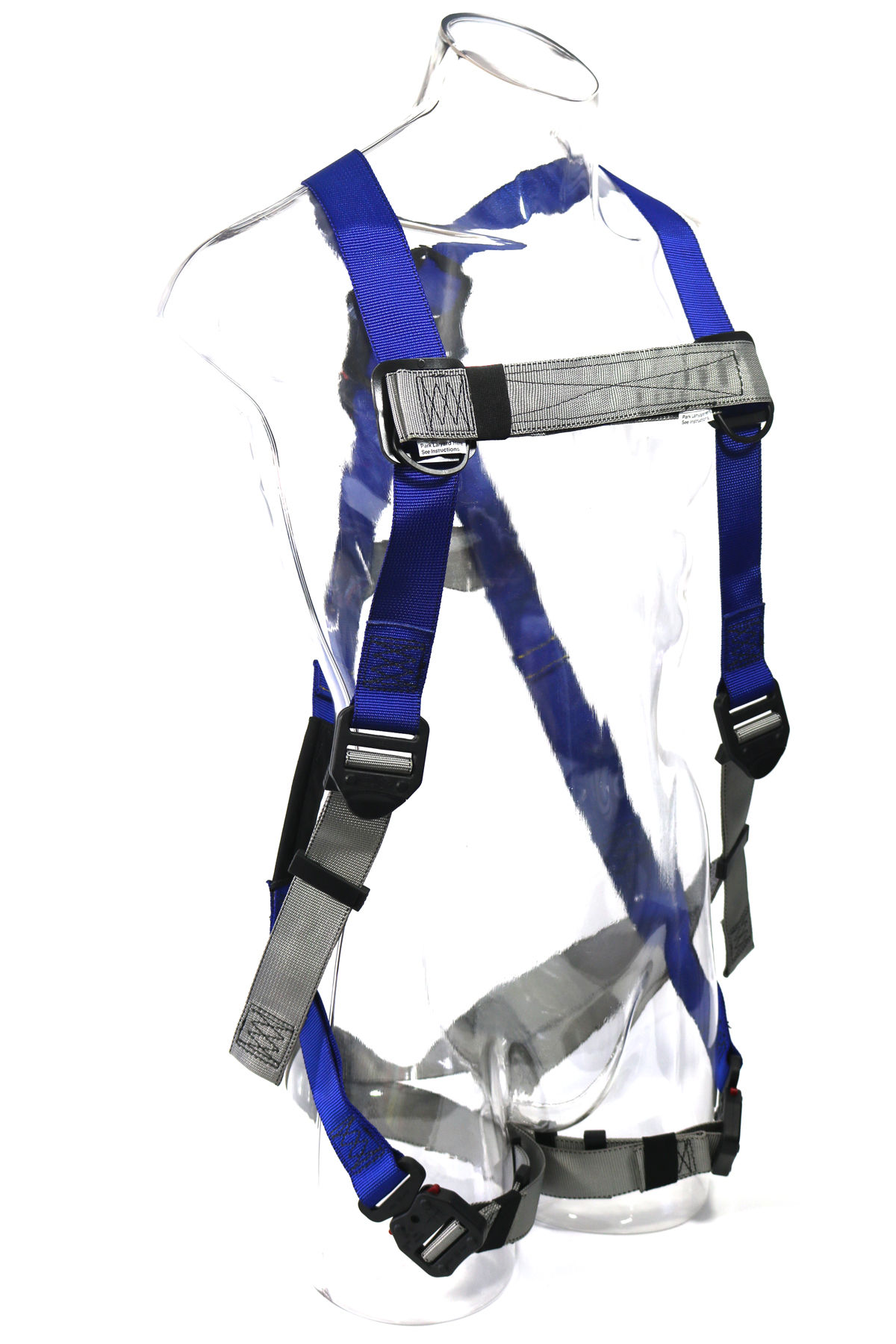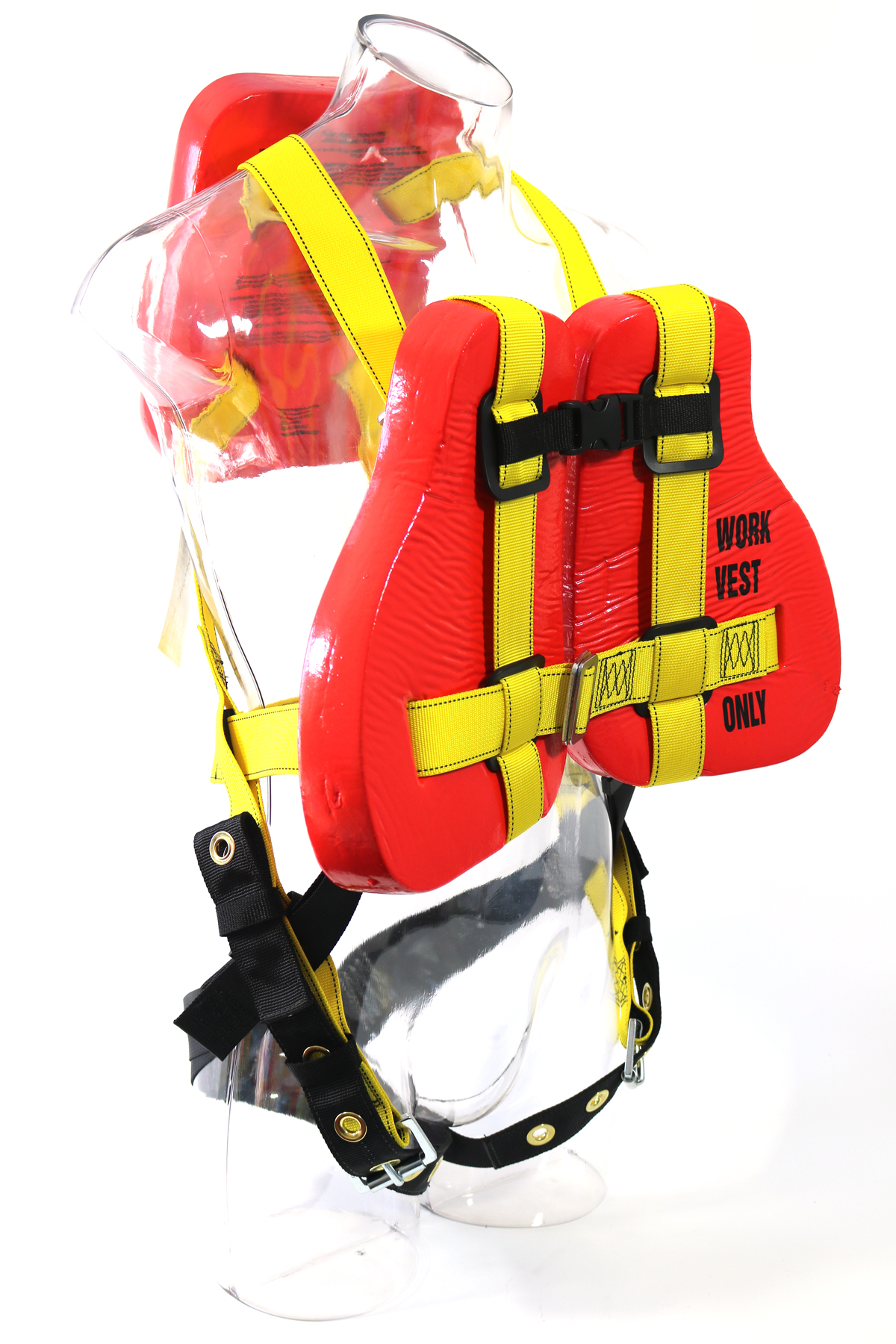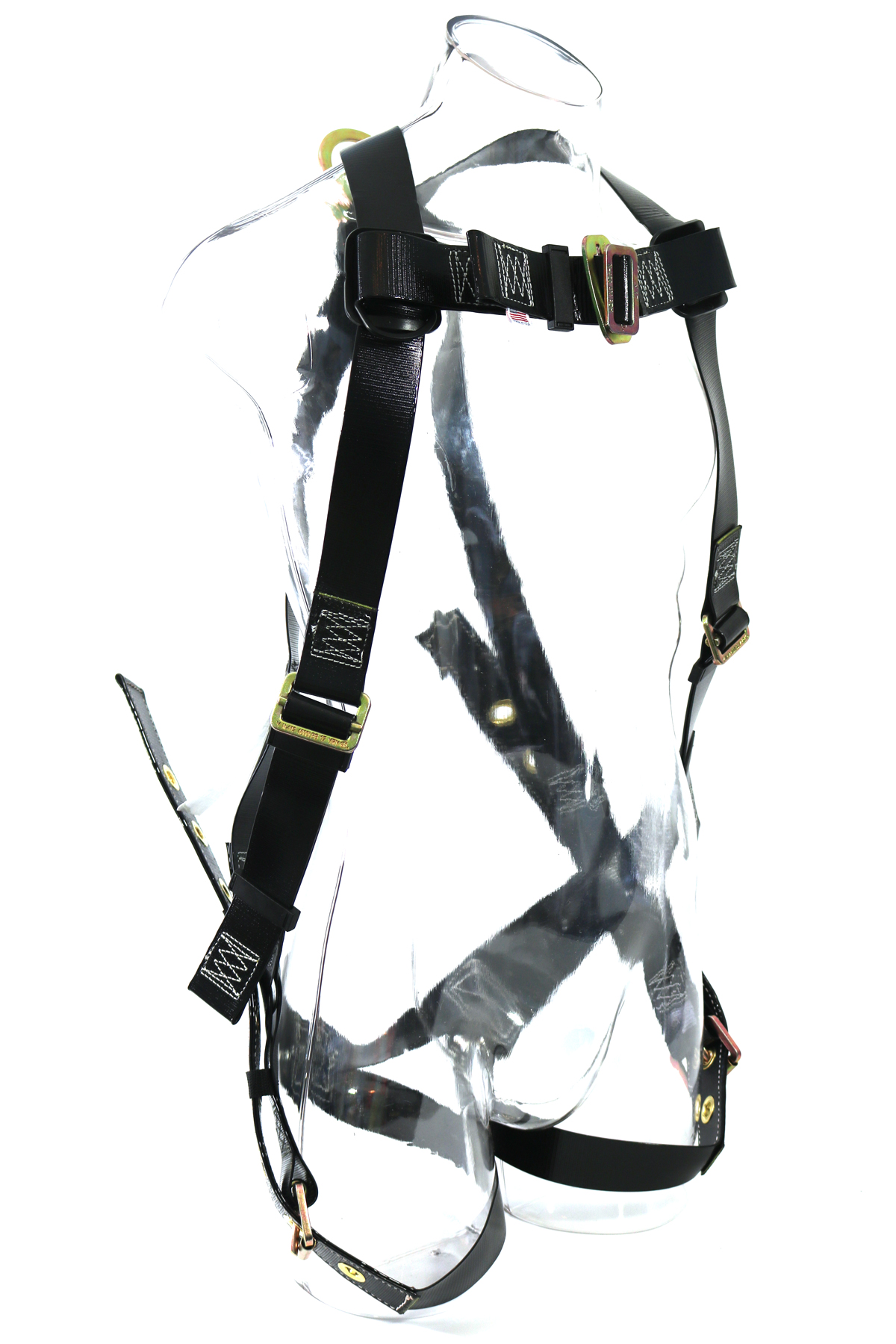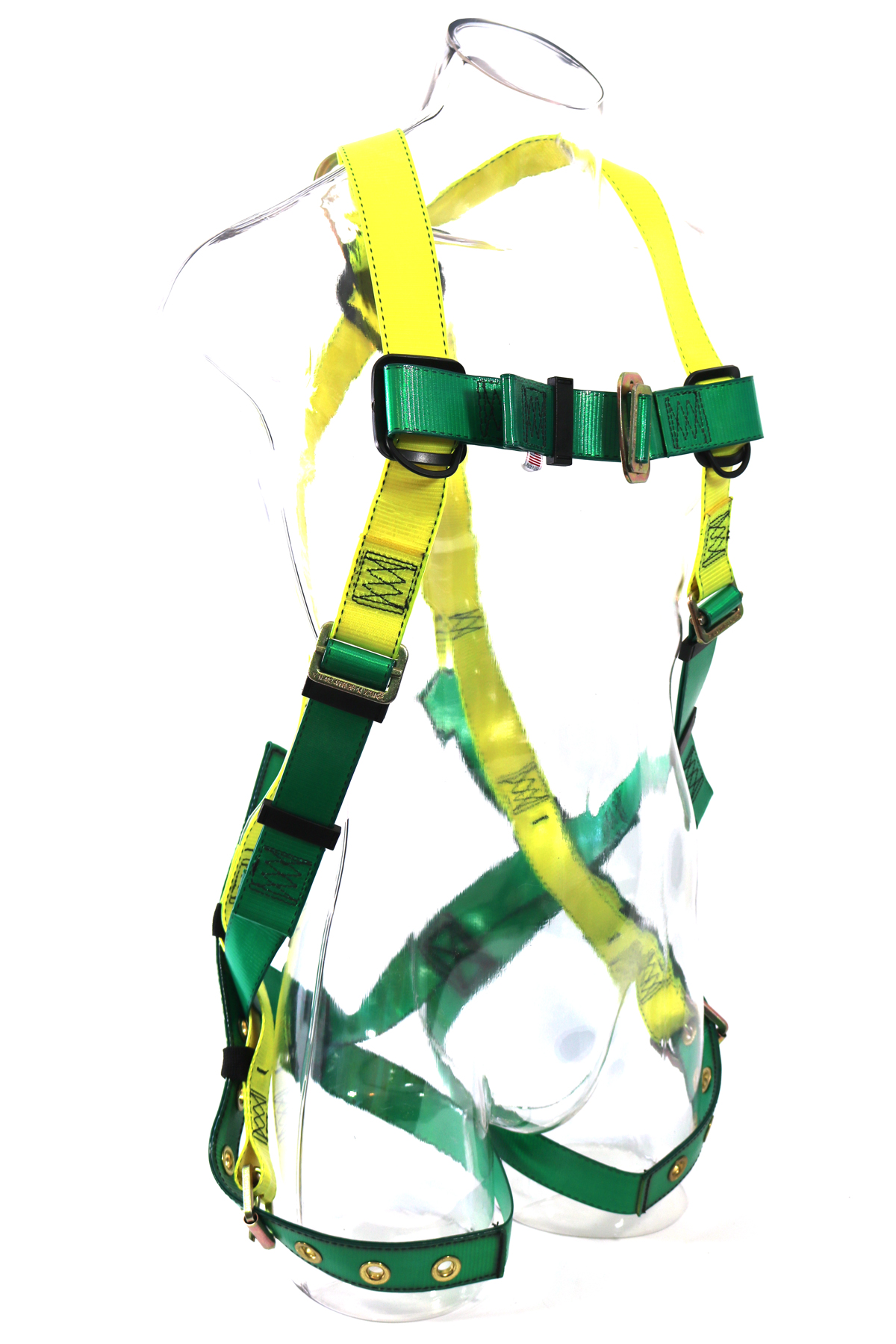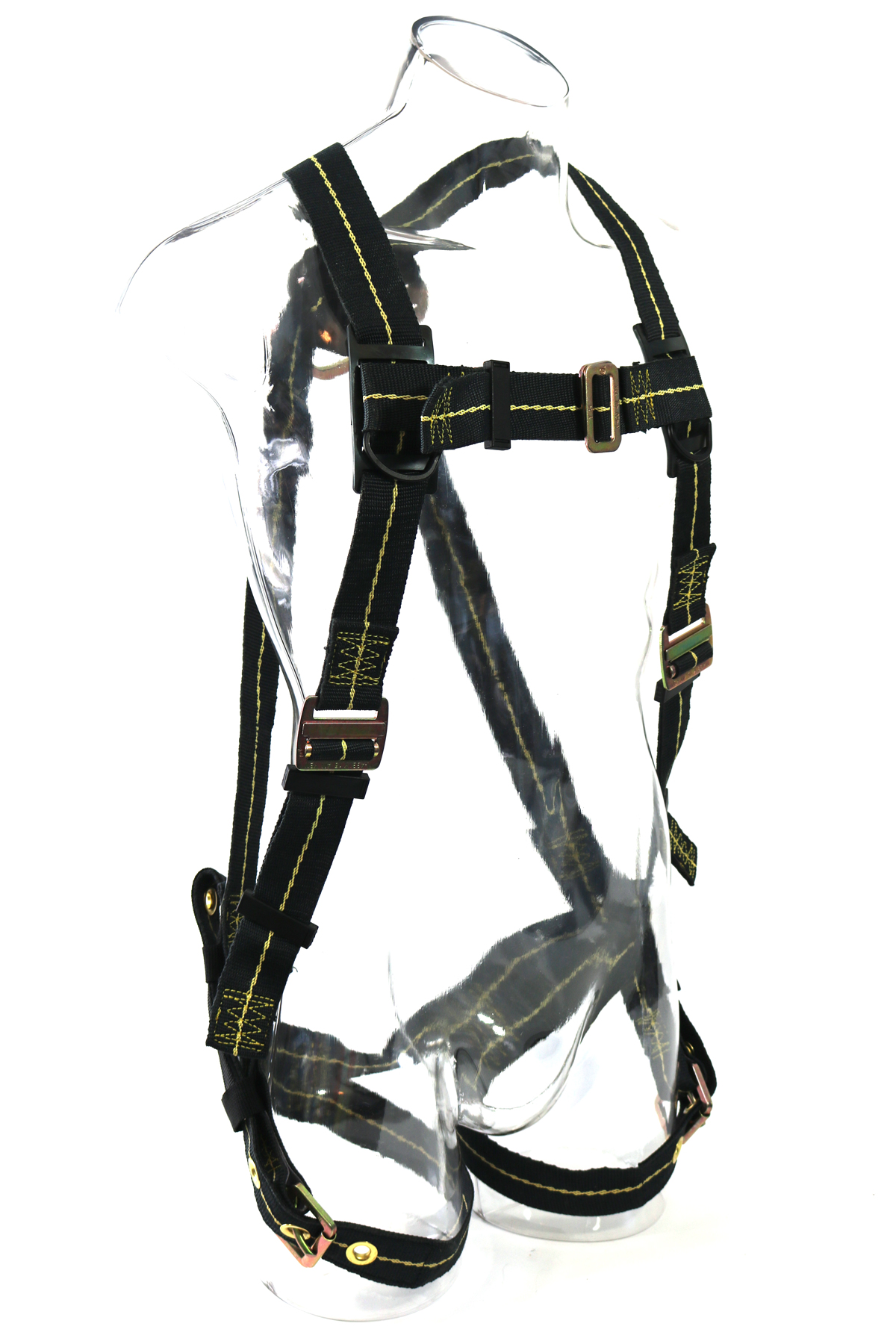At Webb-Rite Safety, worker safety is our top priority. For over two decades, we have been working closely with our clients to provide fall protection equipment, such as safety harnesses, that is perfectly designed, engineered, and fabricated to fulfill the diverse needs of any project. Our products include:
- Tie back anchors
- Horizontal lifelines
- Vertical systems
- Rigid rail systems
We optimize our equipment for use in a wide variety of industries. Our full body harnesses can be used for any sort of application, from construction to aerospace and defense. Regardless of our diverse product line, we understand that every project is unique—which is why we’ll build brand new equipment for clients who need something that we don’t already offer.
Safety Harnesses by WRS
The Webb-Rite full body harness offers a wide range of configurations, so every possible need in the field can be met. Positioning, rescue, extra comfort, quick connect buckles, black hardware, aluminum hardware, dielectric hardware—the possible combinations are ample.
As the most crucial element in a fall protection system, our full body harness is designed with the user in mind to give him or her confidence and peace of mind through comfort and mobility while safely distributing fall forces across the person’s body in case of a fall—all of which reflects in the person’s productivity.
There are a number of considerations that go into creating safety harnesses that are secure, comfortable, and functional. The biggest factors that we consider are:
- Hardware
- Webbing
- Padding
- Critical fit
The harness’ hardware should never be oversized or undersized; rather, it should be compatible with other devices and easy to connect. It is also vital for the hardware to be sturdy — it should never burst out during a fall, and it must not have sharp edges.
Webbing should be made from a sturdy, tightly woven yarn that will not snag on the hardware. It must hold up to harsh environments and should always meet the ANSI standard of 5,000 pounds tensile strength.
Additionally, fall protection harnesses should always be comfortable and fit well. Padding must maintain its shape over time, and should be easily adjustable by the wearer. It must also be durable, holding up to frequent use in harsh environments. To ensure proper safety, it is vital for the harness to be properly fitted to the employee. It should have D-rings located in the middle of the back and chest straps positioned in the middle of the chest, both of which are snugly fastened.
What are the OSHA Standards & Regulations for Fall Protection?
The Occupational Safety and Health Administration (OSHA) requires employers to set up workspaces with fall protection in mind. This includes keeping the worksite free of known dangers, keeping floors clean and dry, and providing general protection for various fall hazards.
For general industry workspaces, employers must provide fall protection at elevations of four feet or more. This requirement changes depending on the industry—for example, fall protection must be provided at six feet in the construction industry, and at five feet in shipyards. Regardless of the industry, employers must always provide fall protection if employees will be working above dangerous machinery or equipment.
In addition to these standards, OHSA has specific regulations employers must meet in various circumstances. If workers will be around dangerous holes or pits, employers must utilize railings and floor hole covers. Employers must also always provide guard rails and toe-boards around elevated platforms, and must give fall safety harnesses and other safety equipment to employees at no extra cost to them. Additionally, OSHA requires employers to provide safety training to workers.
At Webb-Rite, we offer an Authorized Person course to train anyone who will be working at heights. This course lasts eight hours and meets or exceeds all OSHA and ANSI requirements. Students who complete the course will have a working understanding of rescue equipment and personal fall arrest. Some of the topics we cover in this course include:
- Fall protection rescue procedures
- Inspection of equipment components and systems
- Fall hazard recognition
- Applicable fall protection regulations
- Fall hazard elimination and control measures
- The responsibilities of designated persons under OSHA standards
- How to use written fall protection procedures
Fall Protection Solutions From Webb-Rite
Falls are one the largest causes of workplace injury and death—but they are preventable. At Webb-Rite, we are dedicated to working closely with employers to exceed OSHA standards and provide a safe working environment for every single employee. We are proud to provide the best fall prevention systems on the market. If you think we can be of service to you, please don’t hesitate—contact us today.
- Anchorage Connectors
- Cable
- Confined Space
- D-Ring Extenders & Anchor Straps
- Engineered Fall Protection Systems
- Engineered Systems
- Fall Arresters
- Featured
- Featured Product
- Harness Accessories
- Harnesses
- Hooks & Carabiners
- Lanyards
- Material Handling
- News
- Permanent Fall Arrest Solutions
- Podcast
- Portable Fall Arrest Solutions
- Products
- Rescue Equipment
- Self Retracting Lanyards
- Services
- Spring Sale
- Training
- Uncategorized
- Webb-Kote
- Webbing
- Work Carts

